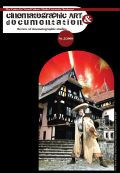An Encounter with the Shadow
An Encounter with the Shadow
Author(s): Mariana DanSubject(s): Fine Arts / Performing Arts, Aesthetics
Published by: Universitatea de Teatru si Film »I.L. Caragiale« (UNATC)
Keywords: Bertolucci;
Summary/Abstract: The spiritual transformation of Buddha in Bertolucci's film Little Buddha follows a pattern that includes five stages: 1) description of the normal state of reality or of the world; 2) the insertion of an element that disturbs the initial order; 3) the protagonist's awareness that the reality is currently different from what it seemed; 4) the protagonist's effort to understand the disturbance and its struggle to overcome it or to overcome it; 5) the order restored successfully, but it is now a new order, superior, in which the protagonist and the new reality are enriched thanks to the difficulty that had to be met. In this model, if we do not take into account that in the case of the Buddha it is about the psychic and spiritual steps that must be taken to attain enlightenment, we can recognize a scenario common to fairy tales, novels police, Hollywood movies of the self-made man etc. The shadow of which we speak in this text is the obstacle that the protagonist must meet in his spiritual evolution and that he must overcome. The presence of the shadow is also identified in various initiation rituals belonging to traditional cultures, in yoga, in the suffering of the biblical character Job, in the encounter of Jesus with Satan after his initiation (baptism), in alchemy and in modern deep psychology. Contrary to appearances, it is not a struggle between good and evil; for the shadow is not evil, but only a step that man must go through in his spiritual evolution, where, in the terms of modern psychology, one must integrate what looks good and bad (coincidentia oppositorum) to complete the process of individuation. The aim of alchemy was not to study matter either, but, as in the processes of initiation, to liberate the soul from matter. One could reach the state of albedo (synonymous with enlightenment in the case of exceptional men like Buddha and Jesus for example) only if one went through the stage of nigrédo (the shadow) and rubedo (the blood / the sacrifice / the renunciation / deconditioning of the material world to connect with the cosmic spirit, religion, it is religare in Latin). In this text we also follow the concrete experiences, the encounters with the shadow in yoga that the individual will cross during the meditation and which are similar. The encounter with the shadow is parabolically represented by the wheat grain that must be buried (sacrifice / shade) to be reborn. It is difficult to establish whether human gestures have become symbolic, or the human experience has been illustrated and fixed in myths, symbols and parables to give examples of the behavior and human wisdom that survive, in such a way, the passage of time, space and change of our Weltanschauung. The film Little Buddha is only a model that confirms the rule.
Journal: Cinematographic Art & Documentation
- Issue Year: 2008
- Issue No: 02
- Page Range: 41-48
- Page Count: 8
- Language: English

